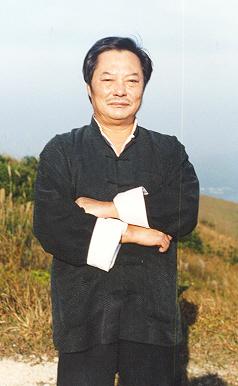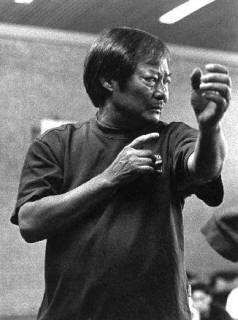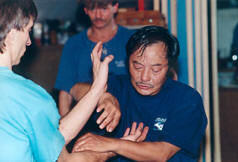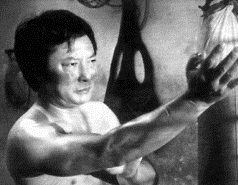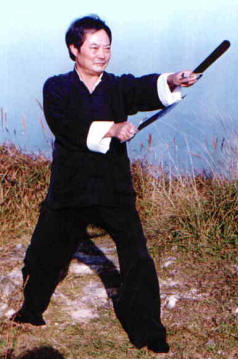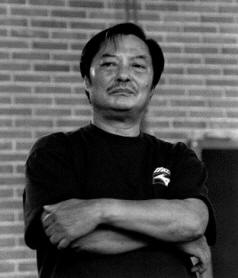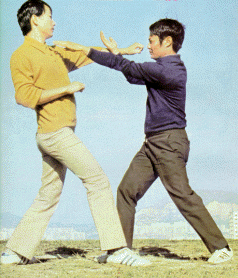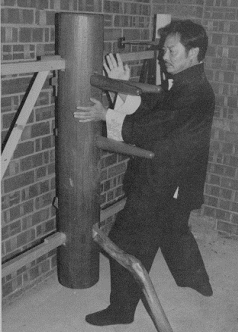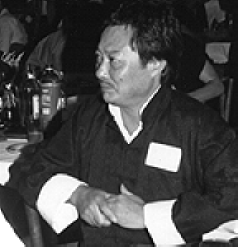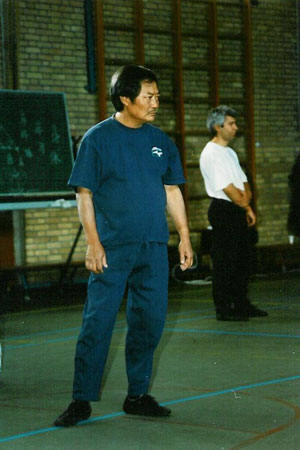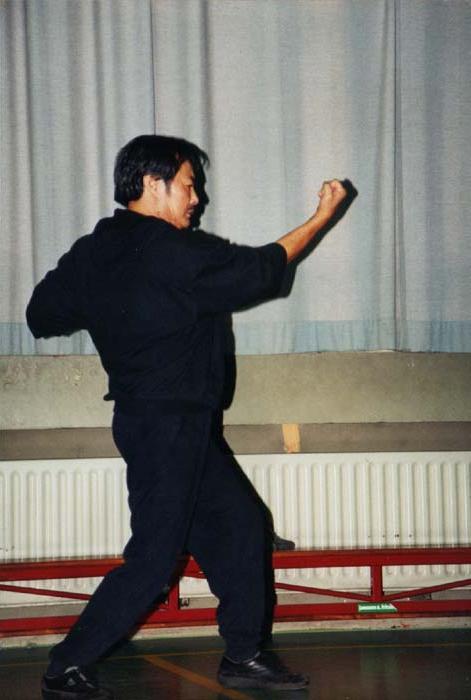Wong Shun Leung, the Legend
Wong Shun Leung, the Legend Preface |
| |
The 1970s: lessons of the past handed down to the next generation Because of reconstruction on the building, Wong moved his school from the original Yaumatei premises to a new location on the 5th floor of another building on Reclamation Street on the 16th August, 1971. He continued teaching at that location until 1975. During that period, he and his students took part in countless tournaments in Hong Kong and elsewhere in the region, with outstanding results. At that time, with the help of friends, Wong moved his school to Granville Road in the Tsimshatsui district and continued the advancement of Ving Tsun. In 1976, Wong Shun Leung left Tsimshatsui and commenced teaching in the front apartment on the 9th floor of 506-508 Nathan Road, Yaumatei. Thus, from the end of the 60s through to the 70s, Wong Shun Leung threw all his efforts into developing and refining his Ving Tsun. He taught many, many talented students during those years, many of whom are now famous Ving Tsun instructors in their own right both in Hong Kong and overseas, such as Wan Kam Leung, Ng Chun Hong, (Tommy) Yuen Yim Keung, (Lawrence) Leung Chi Sing, Ko Kwong Nin, (Gary) Lam Man Hok, Chan Kim Man, Ko Kin, and so on. The 1980s: roots in Hong Kong, flowers all over the world By the end of the 70s and the beginning of the 80s, Wong Shun Leung had come to something of a low point in his life, having struck hard times in keeping his school running. Then, towards the end of the summer of 1983, a German by the name of Philipp Bayer came to Hong Kong with the aim of becoming Wong’s student, and studied the Ving Tsun system under him there. Bayer invited Wong Shun Leung to travel to Germany and Europe, with a view to conduct seminars there for the promotion of ‘Wong Shun Leung Ving Tsun Pugilism’, and he then set about organizing everything on behalf of his teacher. In December of the very same year, an Australian by the name of David Peterson (who also goes by the Chinese name Ding Chaochen) also came to Hong Kong specifically to become Wong Shun Leung’s student in Ving Tsun. From then on, Peterson returned to Hong Kong at least once every year after that until 1992 in order to study at Wong’s school. During that time, Peterson also arranged for Wong to travel to Australia for the purpose of conducting seminars. It really could be said that this presented Wong with a dream opportunity in his lifetime, and both of these students did much to promote Wong Shun Leung and Ving Tsun overseas. Wong took advantage of this opportunity and through his trips to European countries, was able to establish the “Wong Shun Leung Way” in Europe. He then traveled to Europe for seminars every year, staying there for up to two months at a time. As for Australia, Wong first went there in February of 1986 to conduct his inaugural seminars there. In total, between then and 1994, Wong Shun Leung traveled to Australia four more times. One could well say that this was a high point in Wong’s Ving Tsun career, moreover, it remained so on into the 1990s. From the mid-1980s onwards, foreign students from many different nations came to Wong Shun Leung’s school in Hong Kong for training. One of Wong’s student, Cliff Au Yeung (one of the authors of this article), became Wong’s chief translator in order to overcome the language barrier, both in Hong Kong and in his teacher’s travels to Europe for seminars on at least two occasions. Several of Wong Shun Leung’s students of this period, such as Chiu Hok Yin and Li Hang Cheong, became successful Ving Tsun instructors in present day Hong Kong. The 1990s: a Dragon returns home, a Hero goes to heaven The school in Nathan Road had to be closed in 1988 because of rental problems, so Wong began using the ‘Ving Tsun Athletic Association’ premises for running his classes, remaining there until 1997. Mr Leung Man To, a good friend of Wong Shun Leung as well as a famous martial arts researcher especially interested in Chinese wrestling, respected Wong very much indeed for his knowledge, ability and experience in Ving Tsun Gung-fu. With his connections in China, in 1996 Mr Leung organized a seminar in Beijing, China. It had been Wong’s long time desire to reacquaint the Chinese people with the Ving Tsun system, especially since it had become so successfully introduced to Hong Kong by Ip Man, and eventually to the rest of the world, yet little known to the Chinese people in its homeland. By doing so, Wong hoped to see Ving Tsun regain the fame and popularity that he felt it deserved, and so he made his first trip to the capital, Beijing, on August 12th of that year, accompanied by his student Li Hang Cheong and Mr Leung Man To. It was a very successful trip, with many famous Chinese martial artists amongst his audience, while a well known martial arts magazine, ‘Martial Soul’, ran a series of articles about Wong Shun Leung and his exploits. While in Beijing, Wong was also able to demonstrate his theories on the‘ Science of Ving Tsun Pugilism’ as well as presenting his article ‘A Discussion of the Science of Ving Tsun Pugilism’ which described the essence of Ving Tsun theory, based upon his many years of practicing and researching the system. By October of the same year, the ‘Chinese National Sports Control Centre’ and ‘Martial Soul’ magazine, together with the sponsorship of the Hong Kong ‘VTAA’, again invited Wong Shun Leung to Beijing to conduct the first ever such presentation which was named the ‘1996 All China Ving Tsun Gung-fu Short Course’. This historical event was headed by Wong who was accompanied by ten of his Hong Kong and European-based students (these included Chan Kim Man, Ma Chung Sing, Li Hang Cheong, Wong Kwong Yung, Law Wing Tak, Fong Si Lai, Wong Fei, and others), and they all played an important role in bringing Ving Tsun Gung-fu back to the mother country. (Note from the translator: I met si-suk Wong on the street in Mongkok shortly after his return from this trip and he exclaimed, “I knew that it wasn’t going to be easy, but they really tested me out and showed no mercy to this elderly man.”) According to Mrs. Wong, before her late husband made his trips to China, he prepared everything with great care and attention, while at the same time still carrying on with the teaching of his classes. All of this, plus a lot of social activities, left Wong extremely fatigued. On January 12th, 1997, while at a gathering of his Ving Tsun brothers at the ‘VTAA’ , he collapsed into a coma and was rushed by ambulance to the Kwong Wa Hospital where he remained until his death some 16 days later [January 28th 1997, at 3.07 p.m]. During this time, many of his friends, students, both local and overseas-based, came to show their concern of his situation, and ultimately, pay their last respects at his funeral after he passed away on the afternoon of the 28th of January, having never regained consciousness in his 62nd year. [He died at the age of 61. ] | ||
Other articles by sifu


